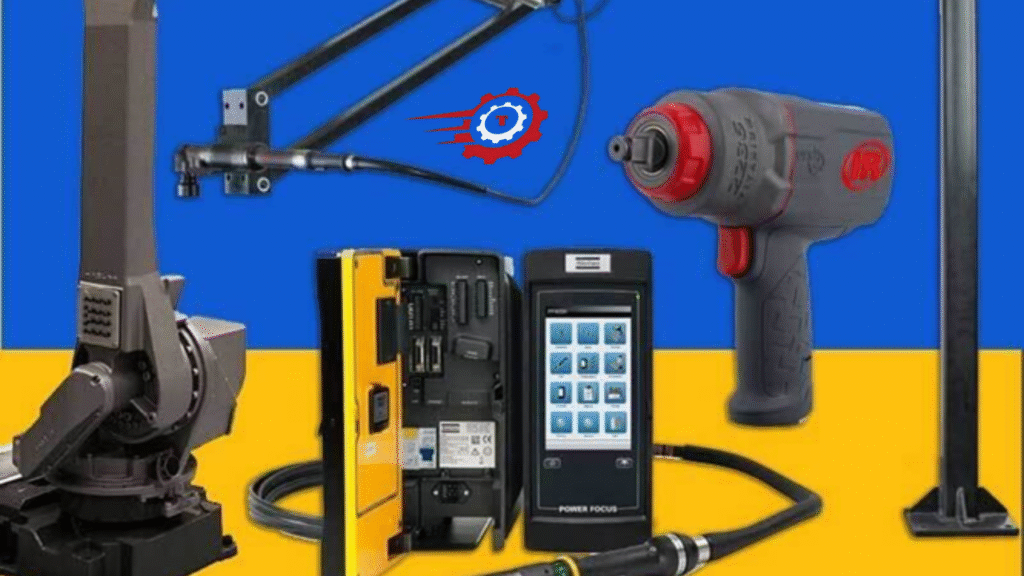Industrial automation relies on precise motion and reliable power. Factories and plants that use automated systems need components that move parts, clamp pieces, or rotate shafts without fail. Two workhorses in that realm are linear actuators and air motors. You might know linear actuators as the device that slides gates or lifts trays. Air motors spin tools or conveyor wheels. When you tie these elements into a control system, machines gain speed, repeatability, and a safe work environment. In this post, you’ll learn how each device works, where it fits, and why Flexible Assembly Systems can boost your uptime and lower your costs.
How Linear Actuators Boost Automation?
Linear actuators translate rotary motion into straight-line travel. Think of them as precise movers that push, pull, lift, or press. You find them on packaging lines, assembly stations, and inspection rigs.
Types of Linear Actuators
- Electric linear actuators
- Pneumatic linear actuators
- Hydraulic linear actuators
Each type meets a distinct need:
Electric actuators
- Offer fine position control via servo or stepper motors
- Connect easily to PLCs or motion controllers
- Require minimal air or fluid supply
Pneumatic actuators
- Act fast at low cost
- Work well where compressed air exists
- Handle moderate force
Hydraulic actuators
- Deliver very high push or pull forces
- Fit heavy-duty presses or forming tools
- Demand robust fluid circuits
Key Advantages
- Repeatable travel down to a few microns
- Quick cycles for high output
- Quiet operation (electric types)
- Safe use in explosive atmospheres (pneumatic)
- Smooth motion under heavy loads (hydraulic)
By matching actuator type to the job, you sidestep downtime and meet tight tolerances.
How Air Motors Power Rotary Tasks?
Air motors, also known as pneumatic motors, turn compressed air into rotary force. They fit where electrical power poses a spark risk or where you need high torque at low speed.
Working Principle
Air compresses into the motor chamber. The pressure pushes on vanes or turbines, causing the rotor to spin. Exhaust vents guide spent air away. That simple cycle repeats with no electrical contacts inside.
Common Uses
- Conveyor drives in drying ovens
- Spindle drives for drilling or tapping
- Indexing tables in assembly cells
- Mixer shafts in food or chemical lines
Benefits of Air Motors
- High torque at start-up
- Stall-safe operation – you won’t burn windings
- Long service life with filtered air
- Temperature resilience in hot or cold spots
When you need consistent torque under rugged conditions, air motors stand out.
Integration and Synergy
Pairing linear actuators with air motors unlocks lean layouts and compact cells. You might see an air motor spinning a rotary table. A linear actuator then lifts that table to transfer parts to the next station. Control logic tells each element when to move. Sensors confirm part presence and safe positions.
With modern I/O modules or Ethernet-based networks, you link motion axes and valves into unified control. You get:
- Reduced wiring by sharing air headers
- Unified diagnostics to spot stalls or leaks
- Centralized speed and position adjustments
- Faster changeover via recipe loading
In one installation, an assembly line cut cycle time by 20 percent when it replaced manual indexing plus electric clamps with a coordinated air-motor table and pneumatic grip actuators.
Implementation Considerations
Before you mount a linear actuator or air motor, check these points:
- Air quality – use filters, regulators, lubricators
- Power supply – size wires or hoses to avoid pressure drop
- Environmental seal – guard against dust or coolant spray
- Mounting brackets – ensure rigidity to prevent misalignment
- Control interface – match valve type and signal level
- Safety interlocks – include limit switches or proximity sensors
A quick pre-installation checklist helps keep your project on schedule and within budget.
Why Choose Flexible Assembly Systems?
When you seek a partner for motion and power modules, you want one that adapts to your production mix. Flexible Assembly Systems meets that need through:
- Modular rails and carriage blocks ready for linear actuators
- Standard air-motor mounts that snap onto gearboxes or conveyor frames
- Over 100 actuator models rated for different strokes and forces
- In-house design support for custom brackets or manifolds
- Fast lead times on stocked items
Our team guides you from concept to commissioning. You won’t sort through dozens of catalogs or chase multiple suppliers. We bundle components, design sub-assemblies, and hard-wire air panels to your specs.
Maintenance and Support
Regular checks keep your units running. We recommend:
- Drain water traps daily
- Swap air filters quarterly
- Lubricate slide rails at service intervals
- Inspect seals and vanes for wear
Flexible Assembly Systems offers repair kits and on-site training. You gain clarity on wear signs and preventive tasks. You lower downtime and extend service life.
Future Trends in Drive Systems
Automation moves fast. You’ll see:
- Smart sensors on actuators, reporting stroke count or load
- Cloud dashboards alerting you to abnormal vibration
- Remote valve tuning via IIoT links
- Hybrid actuators combining electric drive with air cushioning
Such features help you ramp up capacity and spot issues before they hit production.
Final Thoughts
Linear actuators and air motors form a dependable base for industrial automation. They deliver precision, force, and safety in varied setups. Careful pairing and control let you streamline cycles and simplify maintenance. Flexible Assembly Systems stands ready to support your next project. Reach out for sample units, CAD models, or a system review. Let’s build a smarter line together.

